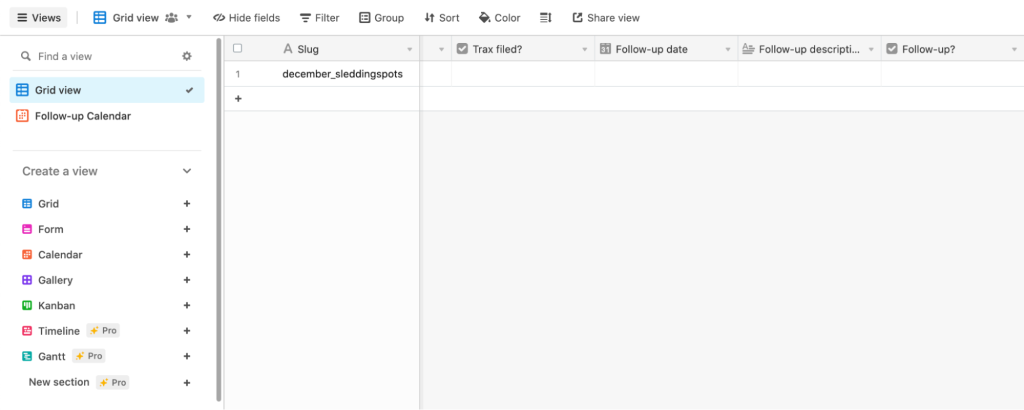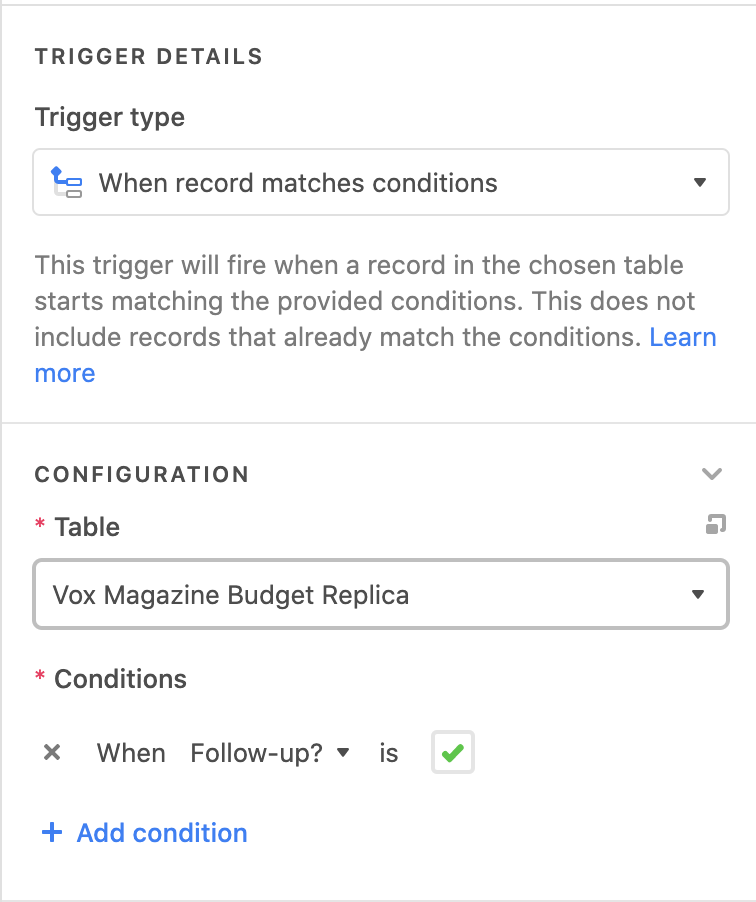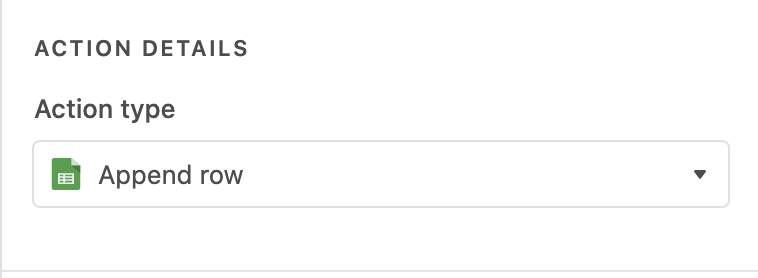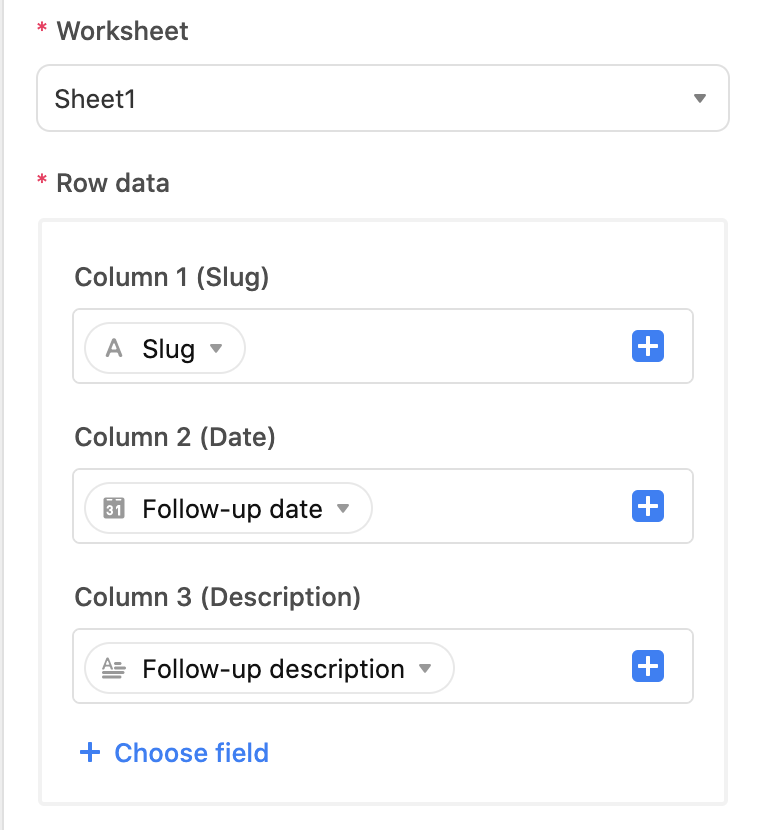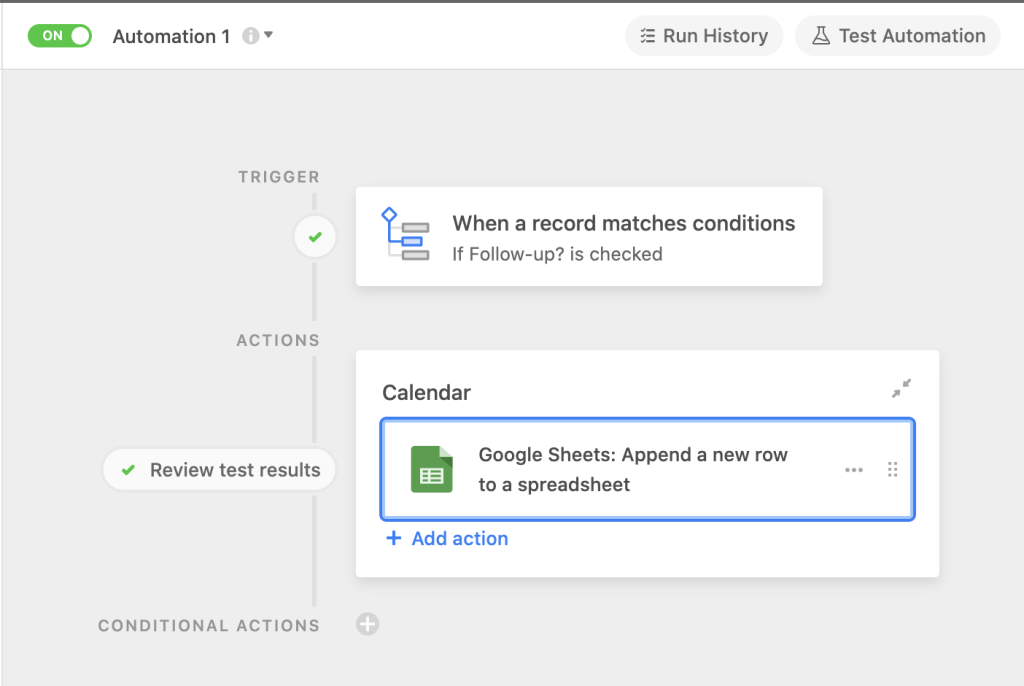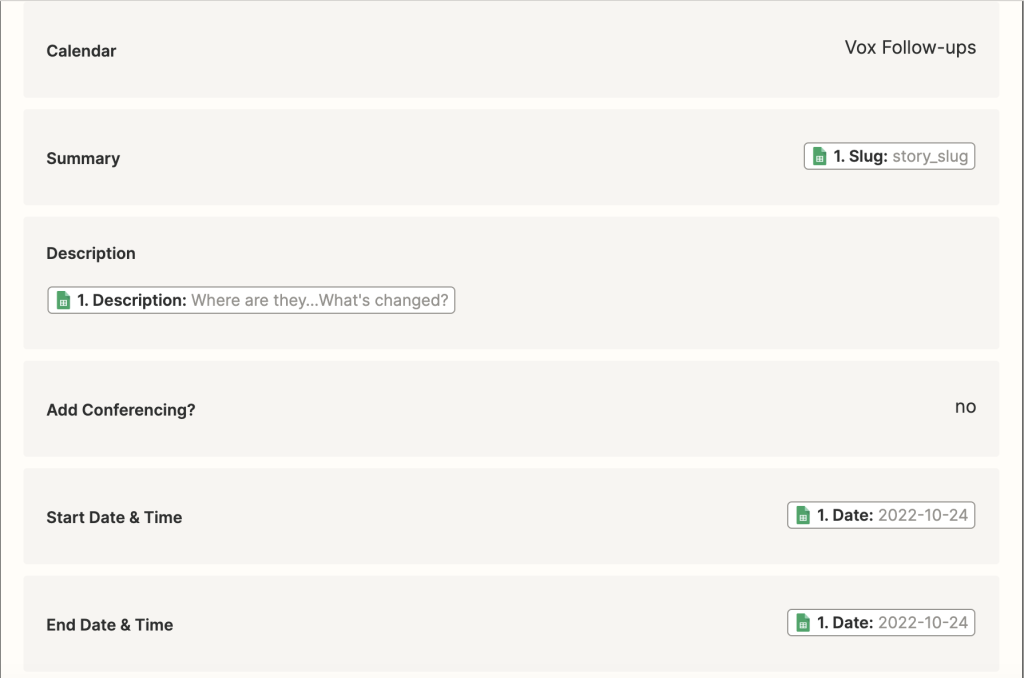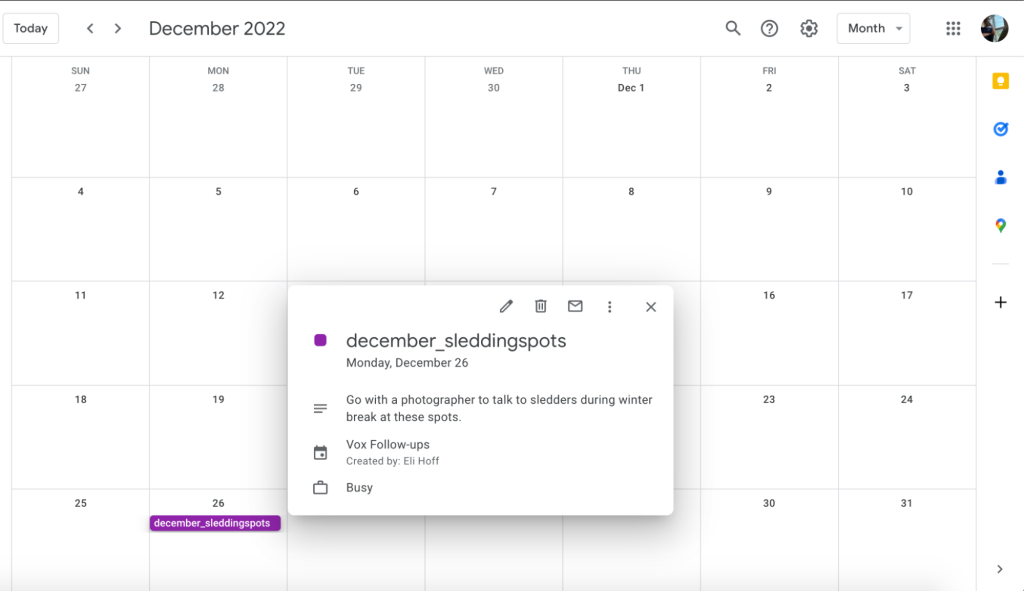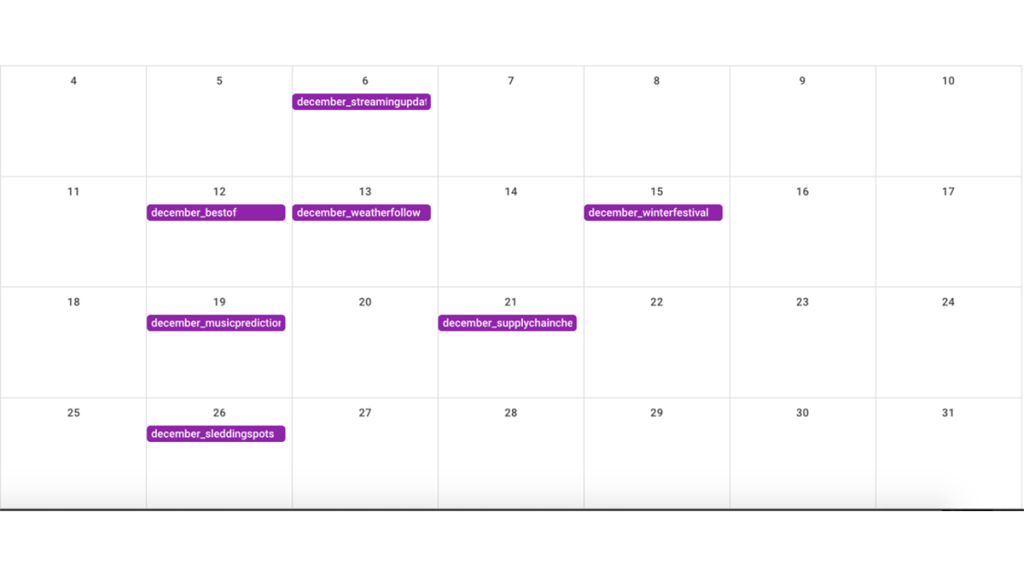
A Google Calendar integration shows a newsroom’s ideas for December follow-up stories.
Automating story follow-up tracking — for free
Airtable, Zapier and Google Drive products make remembering when to circle back to a topic a breeze. We built a simple automation system to track and share ideas for follow-up stories
Follow-ups are hard. Journalists have a lot to keep track of, from their own deadlines to news events, so it’s easy for story follow-up ideas to slip through their calendar’s cracks.
Vox Magazine, a city culture magazine, wanted to automate its follow-up process to incorporate planning for future stories into the initial pitching and reporting process. Like many news outlets, Vox uses Airtable to keep track of story progress. The magazine had a few baselines for what it wanted out of follow-up automation:
- Functionality with its current Airtable set-up
- The ability to sync follow-up dates with Google Calendar
- The ability to delete records from Airtable without removing them from the calendar
- Adding as few steps as possible to its current story tracing
We built a simple follow-up automation process that sends Airtable records to a Google Calendar using the free versions of Airtable and Zapier (a third-party connector). Here’s how we did it:
We started in Airtable, where we tacked three new columns onto Vox’s current Airtable base. The first one is a date field for the relevant follow-up date. The next is a text field for a description of the follow-up — whether it’s an event, a topic to revisit, more questions to answer, etc. The final field is simply a check box for whether or not there’s follow-up material. (Of course, not every story will have follow-up potential.)
There’s actually a calendar view inside of Airtable that shows follow-up dates, but deleting a record from the base (which is necessary for saving space with some lower-cost versions of Airtable) also removes it from the calendar view.
Airtable’s built-in automation capabilities come in next.
The trigger to start the follow-up automation is when a record, which would be a story added to Vox’s budget here, meets certain criteria. We only need the process to happen when there’s a follow-up, so the trigger criteria is whether the follow-up field added above is checked.
Now, when someone checks the follow-up field, the process will begin.
To be able to preserve records past their Airtable deletion, we need to copy them to an external system. In this case, that’s a Google Sheet — it’s collaborative and will be easy to connect to a Google Calendar later on.
Once a Google account has been connected to Airtable, we can run “actions” through Airtable’s automation capabilities to Google Drive files. For this spreadsheet, we want to add a row for each story, much like an Airtable base. For the action part of our automation, we’ll “append row” in the spreadsheet.
From there, we can choose what Airtable will transfer to the spreadsheet. Because we’re working specifically on tracking follow-ups, we don’t need to transfer everything — though we could. We’ll only send three fields from Airtable over to the spreadsheet: the story’s slug, its designated follow-up date and the follow-up description. Each will get its own column.
Once this is set, we have our first automation process in place. When the follow-up box is checked on Airtable, this process will transfer the three relevant fields to our designated Google Sheet:
Here’s what an example story looks like in the spreadsheet:
The Google Sheet by itself might have some utility to news organizations. It’s possible to sort by the date field to see a chronological listing of follow-ups, and the spreadsheet can be formatted in a nicer-looking way, too. Otherwise, the document is part of the behind-the-scenes automation workflow.
The next step involves Zapier, an app that allows users to build automated connections between programs. Its free version will likely be enough for most smaller newsrooms, and Zapier offers a free trial of its full features.
From here, we’ll be connecting a Google Sheet to Google Calendar, which is one of Zapier’s pre-set templates.
The trigger for this process will be a change in the spreadsheet. When the Google Sheet gets a new row — which is a new story sent over from Airtable — we want Google Calendar to pick it up. It’s also helpful for the calendar to reflect updates to the follow-ups as well, as a bonus.
Once the trigger is connected, it’s on to the action: creating an event in Google Calendar.
We can assign different columns from the spreadsheet to calendar event options. The story slug becomes the event name, the follow-up description becomes the event description, and the follow-up date translates to both the start and end time of the event.
After setting up the Zapier automation, the Google Calendar will show follow-ups on the assigned date:
Newsroom staff can add an outlet’s follow-up calendar to their own — all the perks of Google Calendar.
Because there are two automations facilitating this process, it sometimes takes 30-60 seconds for an Airtable record to become a Google Calendar entry. Records deleted from Airtable, however, remain in both the Google Sheet and Calendar.
Key takeaways
- The automation features of free programs like Airtable and Zapier allow newsrooms to streamline otherwise complicated processes.
- This particular pathway allows for customization in what fields are included for follow-ups, how the intermediary spreadsheet is presented and used, and how a newsroom uses the follow-up calendar.

